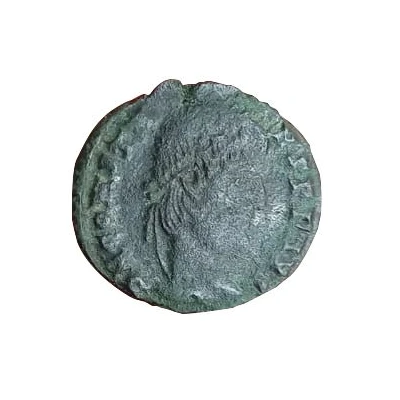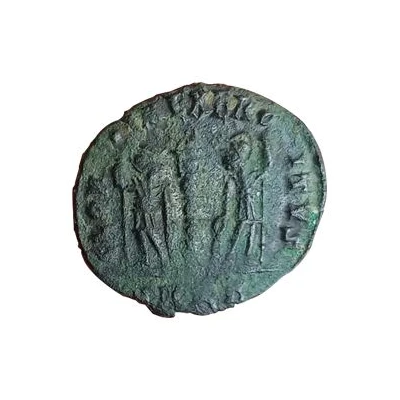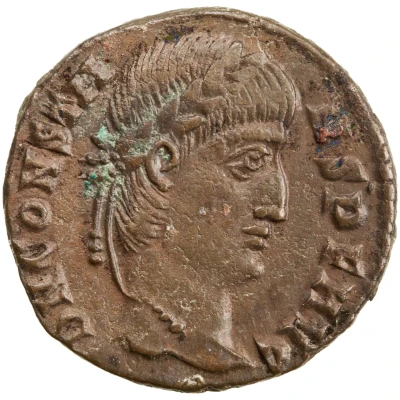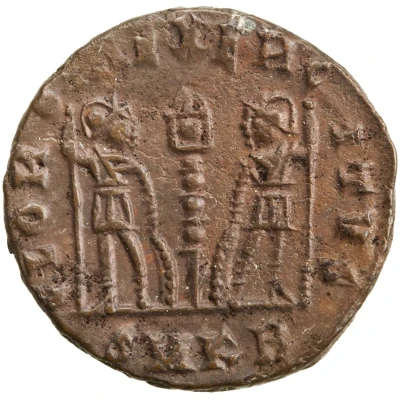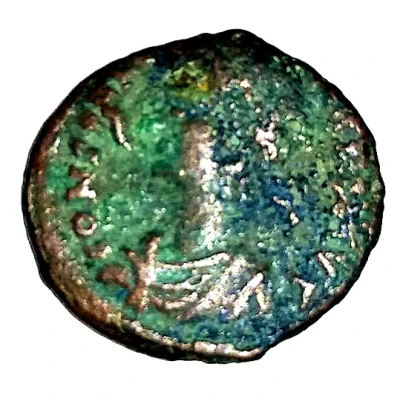
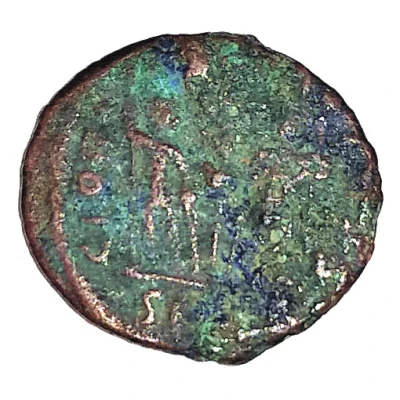

© pejounet (CC BY-NC-SA)
Nummus - Constans I GLORIA EXERCITVS; Cyzicus
| Bronze | 2 g | 16 mm |
| Issuer | Rome › Roman Empire (27 BC - 395 AD) |
|---|---|
| Emperor | Constantius II (337-361) |
| Type | Standard circulation coin |
| Years | 337-340 |
| Value | Nummus (1⁄7200) |
| Currency | Solidus, Reform of Constantine (AD 310/324 – 395) |
| Composition | Bronze |
| Weight | 2 g |
| Diameter | 16 mm |
| Thickness | 1.5 mm |
| Shape | Round (irregular) |
| Technique | Hammered |
| Orientation | Variable alignment ↺ |
| Demonetized | Yes |
| Updated | 2024-10-04 |
| Numista | N#103298 |
|---|---|
| Rarity index | 87% |
Reverse
Two helmeted soldiers facing each other, holding spears in outer hands and leaning on shields with inner hands; one standard between them.
Mintmark and officina in exergue.
Script: Latin
Lettering: GLOR•IA EXERC-ITVS
Translation: Glory of the Army
Edge
Plain
Interesting fact
One interesting fact about the Nummus - Constans I coin is that it features the first Christian symbol, the Chi-Rho monogram, on its reverse side. This symbol, which combines the first two letters of the Greek word for Christ (Χριστός), was used by Emperor Constantine I, also known as Constans, as a symbol of his Christian faith. This coin was minted during his reign, which lasted from 337 to 340 AD, and it is considered one of the earliest examples of Christian iconography on a Roman coin.
